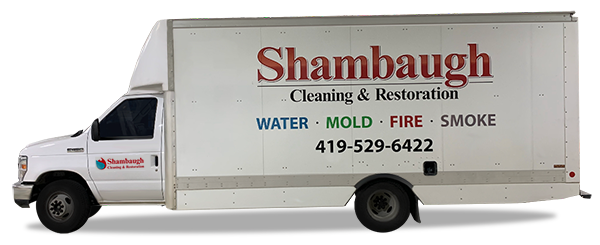Water damage can have serious consequences for your home and your health. Whether it’s from a burst pipe, a leaky roof, or a flood, it’s important to handle water damage correctly to minimize its impact. In this section, we will provide you with essential tips to avoid making mistakes when dealing with water damage. By following these tips, you can protect your home and ensure the well-being of your family.
Key Takeaways:
- Act promptly to address water damage and prevent further damage.
- Understand the severity of water damage by assessing the categories and classes.
- Avoid common mistakes during the water cleanup process.
- Never ignore structural damage caused by water.
- Handle water-damaged electrical systems with caution to avoid accidents.
Understanding the Severity of Water Damage
Before taking any action, it’s crucial to have a clear understanding of the severity of water damage in your home. By knowing the extent of the damage, you can make informed decisions and take appropriate steps towards restoration. Water damage can range from minor leaks to catastrophic flooding, and each situation requires a different level of attention and care.
Water damage is categorized into classes and classes, which help professionals assess the severity and develop an appropriate plan for remediation. Here is a breakdown of the different categories and classes of water damage:
- Category 1: Clean Water – This category refers to water damage caused by clean sources such as broken water supply lines, tub overflows, or rainwater. The risk of contamination is low, making it easier to clean and restore.
- Category 2: Grey Water – Grey water contains a moderate level of contamination and can originate from sources like washing machines, dishwashers, or sump pump failures. It may contain chemicals, microorganisms, or other pollutants, requiring additional precautions during cleanup.
- Category 3: Black Water – Black water is highly contaminated and poses significant health risks. It can result from sewage backups, flooding from rivers or streams, or standing water that has been left stagnant for an extended period. Handling black water requires specialized equipment and professional expertise.
In addition to categories, water damage is also classified into classes based on the level of destruction and evaporation rate. The classes are as follows:
- Class 1 – Minimal damage, affecting only part of a room with low permeability materials. It has a slow evaporation rate.
- Class 2 – Significant damage, affecting an entire room and involving medium permeability materials. It has a faster evaporation rate.
- Class 3 – Severe damage, saturating walls and ceilings. The water may have come from overhead, impacting the entire area. The evaporation rate is high.
- Class 4 – Deeply entrenched damage requiring specialist drying techniques. It typically affects materials like hardwood, concrete, or plaster.
Being aware of the severity of water damage allows you to determine the level of professional assistance required and helps you plan the necessary steps for mitigation. Whether it’s a small leak or a major flood, understanding the categories and classes of water damage empowers you to take appropriate action.
| Category | Definition |
|---|---|
| Category 1 | Clean Water, low risk of contamination |
| Category 2 | Grey Water, moderate contamination |
| Category 3 | Black Water, highly contaminated |
| Class | Description |
|---|---|
| Class 1 | Minimal damage, slow evaporation rate |
| Class 2 | Significant damage, faster evaporation rate |
| Class 3 | Severe damage, high evaporation rate |
| Class 4 | Deeply entrenched damage, specialist drying required |
Not Delaying Action with Water Damage
When faced with water damage, time is of the essence. Delaying action can exacerbate the situation, leading to further damage and the growth of harmful mold. It is crucial to take immediate steps to mitigate and address water damage effectively.
By promptly addressing water damage, you can prevent the spread of water, minimize structural deterioration, and reduce the risk of costly repairs. Additionally, taking swift action can help safeguard the health and well-being of you and your loved ones.
If you delay taking action, even a minor water leak can escalate into a major problem, causing extensive damage to your home or property. Mold can begin to grow within 24-48 hours, posing serious health risks and requiring specialized remediation.
By acting swiftly, you can minimize the remediation process and associated costs. Immediate action includes identifying the source of the water damage, shutting off the water supply if necessary, and mitigating any immediate risks, such as electrical hazards.
In the event of water damage, it is advisable to contact a professional restoration company as soon as possible. They have the expertise, specialized equipment, and knowledge to extract water, dry affected areas, and restore your property to its pre-damage condition.
Remember, proactively addressing water damage is crucial to prevent further harm, protect your health, and preserve the value of your property. Don’t delay—take immediate action when faced with water damage.
Avoiding Common Mistakes with Water Cleanup
When it comes to cleaning up after water damage, it’s important to avoid common mistakes that can worsen the situation. Proper water cleanup is crucial for preventing further damage and ensuring the safety of your home. In this section, we will discuss the most common errors people make during the cleanup process and provide you with valuable tips to prevent them.
1. Delaying the Cleanup Process
One common mistake is delaying the water cleanup process. Time is of the essence when dealing with water damage, as it can lead to mold growth and additional structural damage. Make sure to start the cleanup as soon as possible to minimize the risks associated with prolonged exposure to water.
2. Insufficient Protective Gear
Another mistake people often make is not wearing the proper protective gear during the cleanup. Water damage can introduce harmful substances and contaminants into your home, such as bacteria, mold spores, and chemicals. To protect yourself, always wear waterproof gloves, boots, goggles, and a mask to minimize the risk of exposure to these hazards.
3. Inadequate Drying
Improper drying is a common mistake that can lead to lingering moisture and promote mold growth. Ensure thorough drying by using dehumidifiers and fans to remove excess moisture from the affected areas. Pay close attention to hidden spaces, such as wall cavities and under flooring, as they can trap moisture and cause long-term damage if left untreated.
4. Neglecting Water Extraction
Many people underestimate the importance of proper water extraction during the cleanup process. Using towels and mops alone may not effectively remove all the water, leading to hidden pockets of moisture. Invest in professional-grade water extraction equipment or hire a water damage restoration company to ensure thorough water removal.
5. Failing to Disinfect
Disinfection is a crucial step in the water cleanup process to eliminate harmful bacteria and prevent the spread of contaminants. Use appropriate disinfectants to clean surfaces, furniture, and other items affected by water damage. This will help ensure a safe and hygienic environment in your home after the cleanup.
6. Ignoring Professional Assistance
Attempting to handle extensive water damage cleanup on your own without professional assistance can be a major mistake. Water damage restoration professionals have the expertise, equipment, and knowledge to properly assess, mitigate, and restore your property. Don’t hesitate to reach out to experts for help, especially in cases of significant water damage.
By avoiding these common mistakes and following the recommended tips, you can navigate the water cleanup process more effectively and minimize the long-term impact of water damage on your home. Remember, swift action, proper protective gear, thorough drying, and professional assistance are key to successful water cleanup.
Never Ignoring Structural Damage
When dealing with water damage, it is essential not to overlook the potential for structural damage. Ignoring structural issues can lead to significant and costly problems in the long run. Structural damage refers to any harm caused to the foundation, walls, floors, or other key structural components of your property due to water intrusion.
Structural damage can weaken the integrity of your home and compromise its safety. It can result in sagging or collapsing ceilings, warped walls, uneven floors, or even a complete structural failure. Therefore, addressing structural issues promptly is crucial to prevent further deterioration and ensure the safety of your property.
If you discover signs of structural damage, such as cracks in the foundation, bowing walls, or water stains on ceilings, it is imperative to take immediate action. Here’s some guidance on how to address structural damage caused by water effectively:
- Document the damage: Before taking any steps, document the structural damage by taking photographs or videos. This documentation will be useful for insurance claims and future reference.
- Consult a professional: Structural damage can be complex and require specialized knowledge to assess and repair. It is advisable to consult a qualified professional, such as a structural engineer or a certified contractor, to evaluate the extent of the damage and provide appropriate solutions.
- Stabilize the affected area: If the structural damage poses an immediate risk, take measures to stabilize the affected area temporarily. This may involve installing temporary supports or shoring up weakened sections to prevent further collapse or harm.
- Address the source of the damage: Before repairing the structural damage, it is crucial to identify and fix the underlying cause of the water intrusion. This could involve resolving plumbing issues, fixing roof leaks, or improving drainage systems to prevent future water damage.
- Engage in professional repairs: Once the structural damage has been assessed and the source of the problem has been resolved, it is essential to engage professionals to carry out the necessary repairs. Hiring experienced contractors or structural repair specialists will ensure that the repairs are done correctly and in compliance with building codes.
By not ignoring structural damage and addressing it promptly, you can safeguard the structural integrity of your home and prevent further complications. If you suspect any structural issues in your property after water damage, it is always better to err on the side of caution and seek professional assistance.
Handling Water-Damaged Electrical Systems Safely
Dealing with water-damaged electrical systems is a critical task that requires utmost caution. Failure to handle it correctly can result in serious safety hazards. To ensure your well-being and protect your property, follow these necessary precautions and steps when addressing electrical issues after water damage.
Precautions to Take
Before attempting any electrical work, prioritize your safety by taking the following precautions:
- Ensure the power supply is turned off at the main circuit breaker.
- Wear appropriate personal protective equipment (PPE) such as rubber gloves and safety goggles.
- Avoid working alone. Have someone nearby who can assist you in case of an emergency.
- Never touch electrical equipment or wires with wet hands or when standing on wet surfaces.
- Keep children and pets away from the affected area.
Steps to Follow
Once you have taken the necessary precautions, follow these steps to address the electrical issues:
- Document the damage by taking photographs or videos for insurance purposes.
- Assess the extent of the water damage to determine whether professional assistance is needed.
- If it is safe to do so, remove any standing water or moisture from the affected area.
- Inspect the circuit breaker panel for signs of water intrusion or damage. If any abnormalities are found, contact a licensed electrician for evaluation and repairs.
- Inspect the electrical outlets, switches, and wiring for any visible damage. If there are signs of damage, refrain from using them and seek professional assistance.
- If you need to dry out electrical equipment or appliances, consult the manufacturer’s instructions or contact a professional in that specific field.
- Keep in mind that certain electrical components, such as circuit breakers and fuses, may need to be replaced even if they appear undamaged.
- Once repairs and replacements are completed, have a qualified electrician inspect the electrical system to ensure it is safe and up to code.
Remember, your safety is paramount when dealing with water-damaged electrical systems. If you are unsure or uncomfortable handling the situation, it is best to consult a licensed electrician to ensure the work is done safely and effectively.
Avoiding Health Hazards from Water Damage
When it comes to water damage, it’s not just your property that’s at risk. The health hazards associated with water damage are a serious concern. Whether it’s from a burst pipe, a leaky roof, or a natural disaster, water damage can create an environment conducive to the growth of harmful bacteria, mold, and other contaminants.
Exposure to these hazards can lead to a range of health problems, including respiratory issues, allergies, infections, and even long-term illnesses. It’s essential to take proper precautions to protect yourself and your family from these risks.
Here are some important steps to minimize health hazards caused by water damage:
- Ensure your safety: Before entering a water-damaged area, make sure the power is turned off to avoid any electrical hazards. If necessary, use protective gear such as gloves, masks, and boots.
- Remove standing water: Standing water creates a breeding ground for bacteria and mold. Use a pump or wet/dry vacuum to remove the water as soon as possible.
- Wear protective gear: When cleaning up water damage, always wear protective gear to avoid direct contact with contaminated materials. This includes gloves, goggles, and masks.
- Inhibit mold growth: Mold can start growing within 24-48 hours of water damage. To prevent mold growth, ensure proper ventilation, use dehumidifiers, and promptly dry out affected areas.
- Clean and sanitize surfaces: Thoroughly clean and sanitize all affected surfaces using appropriate disinfectants. This helps eliminate bacteria and prevents the spread of contaminants.
- Seek professional help: If the water damage is extensive or involves contaminated water, it’s best to hire a professional water damage restoration company. They have the expertise and specialized equipment to handle the situation safely and effectively.
By following these precautions and taking swift action, you can greatly reduce the health hazards associated with water damage. Remember, the safety and well-being of you and your loved ones should always be the top priority.
Conclusion
In conclusion, by following these essential tips and avoiding common mistakes, you can effectively handle water damage incidents. Prompt action is crucial when dealing with water damage. Remember to assess the severity of the damage accurately, taking into account the categories and classes of water damage.
Additionally, do not delay in taking the necessary steps to mitigate further damage. Procrastination can lead to more significant issues, such as mold growth and structural damage. Act swiftly to minimize the negative impacts on your home and your health.
During the cleanup process, be mindful of common mistakes that could further complicate the situation. Take appropriate precautions to ensure your safety, especially when dealing with water-damaged electrical systems. Always prioritize structural safety and address any potential health hazards associated with water damage.
By implementing these measures, you can protect your home, maintain your well-being, and prevent long-term consequences. Stay informed, take action, and mitigate the risks associated with water damage. Remember, prevention and proactive measures are key to safeguarding your property and loved ones.
FAQ
What are some essential tips to avoid making mistakes when dealing with water damage?
When dealing with water damage, it’s important to act quickly. Start by turning off the water source and electricity, if safe to do so. Remove any valuable items from the affected area and contact a professional water damage restoration company to assess the situation and begin the cleanup process.
How can I understand the severity of water damage?
Water damage is categorized into different classes and categories based on the level of contamination and extent of the damage. It’s essential to understand these classifications to assess the severity accurately. Water damage restoration professionals can help you determine the category and class of your specific situation.
Why is it important not to delay action when dealing with water damage?
Time is of the essence when it comes to water damage. The longer you wait, the more extensive the damage can become. Immediate action can prevent further damage, reduce the risk of mold growth, and protect the structural integrity of your home. Don’t wait to address water damage; contact a professional restoration company as soon as possible.
What are some common mistakes to avoid during the water cleanup process?
One common mistake is using home remedies or DIY methods for water cleanup. This can lead to incomplete drying, which can result in mold growth and further damage. Another mistake is not adequately documenting the damage for insurance purposes. It’s important to take photos and keep records of the damage and the cleanup process. Hiring a professional water damage restoration company can help you avoid these mistakes and ensure thorough and effective cleanup.
Why shouldn’t I ignore structural damage caused by water?
Structural damage caused by water can have serious consequences if ignored. It can weaken the foundation of your home, compromise its stability, and lead to further issues down the line. It’s crucial to address any structural damage promptly to prevent costly repairs and ensure the safety of your home.
How can I safely handle water-damaged electrical systems?
Dealing with water-damaged electrical systems can be dangerous. It’s crucial to prioritize your safety and follow proper precautions. If you suspect water has come into contact with electrical components, turn off the power to the affected area at the circuit breaker. Do not touch any electrical equipment or attempt repairs yourself. Contact a professional electrician to assess the situation and make any necessary repairs.
What are some potential health hazards associated with water damage?
Water damage can create an environment conducive to the growth of mold, bacteria, and other harmful microorganisms. Exposure to these contaminants can lead to respiratory issues, allergies, and other health problems. Additionally, standing water can become a breeding ground for mosquitoes and other pests. To avoid health hazards, it’s important to address water damage promptly and thoroughly, ensuring proper drying and cleaning of affected areas.
How can I effectively handle water damage incidents?
By following these essential tips and avoiding common mistakes, you can effectively handle water damage incidents. Act quickly, prioritize structural safety, and address potential health hazards. Contact a professional water damage restoration company for assistance and guidance throughout the process. Remember, timely action is key to minimizing damage and protecting your home and well-being.






